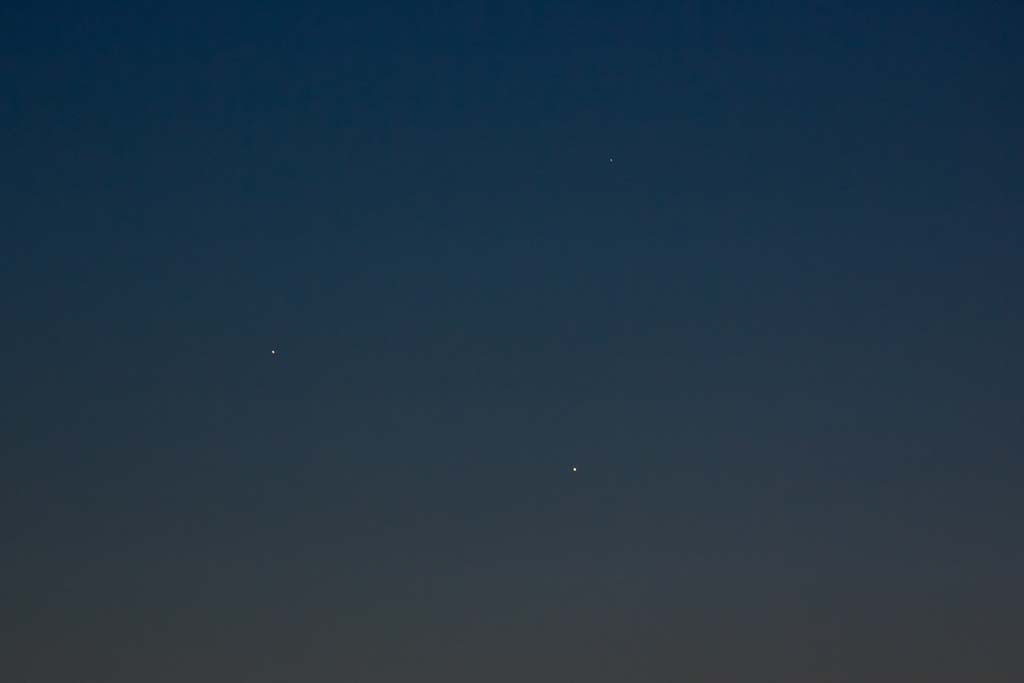If you had a clear sky on Sunday, you may have noticed a celestial triangle in the western sky.

Those weren’t stars: those were the planets Venus, Jupiter, and Mercury.
Over the past week the planets have been inching closer to form an almost-perfect equilateral triangle. A triple conjunction doesn’t happen that often: the next one will be in October 2015.
Though it looked like the three planets were close together, they are separated by millions of kilometres. Mercury is approximately 1.1 astronomical units (AU) from Earth, the distance used to measure distances within our solar system. One AU equals the distance from the Earth to the sun (149,597,871 kms). Venus is 1.6 AU; Jupiter is roughly 6 AU. That means the distance between Venus and Jupiter is almost 658,230,631 kms.
Mercury is one of the toughest planets to observe as its orbit is so close to the sun and it is often lost in the sun’s glare. Venus, the brightest of the planets in our night sky, will be visible at sunset until the fall, when it returns to the morning sky. Jupiter is visible through late fall through to late spring.



Comments